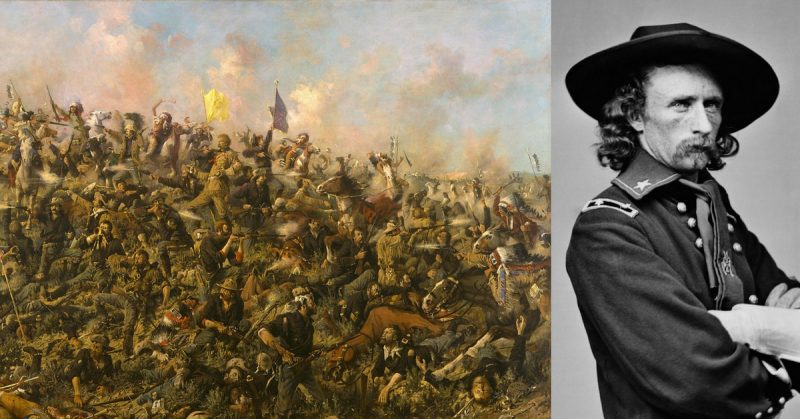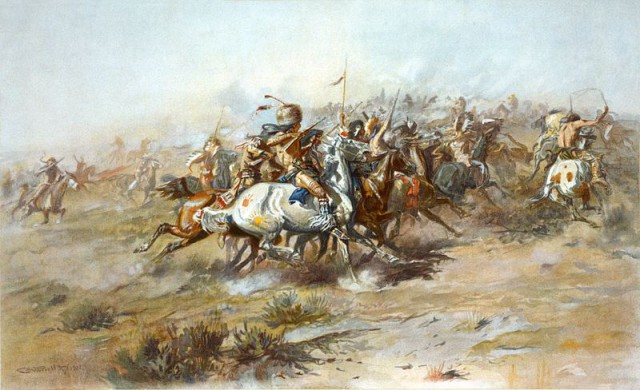George Armstrong Custer is one of the most infamous figures in American military history. A cavalry commander whose style was based on instinct and showmanship rather than strategy and calculation, his successes in the Civil War came to be overshadowed by the utterly misguided decisions that lead to him being killed at Little Bighorn.
The Dashing Cavalier
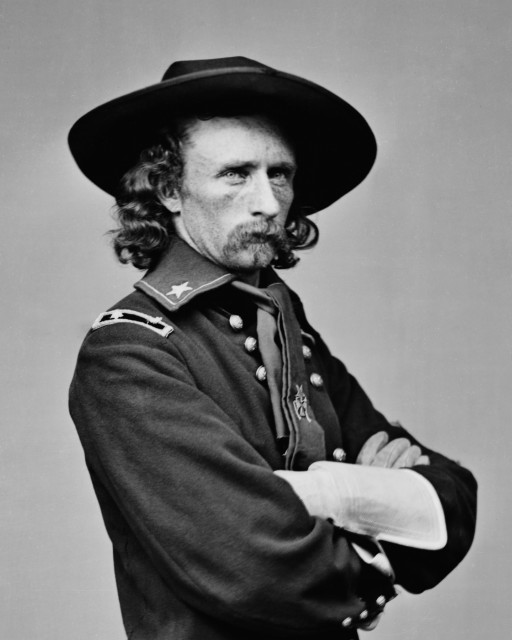
Born in 1837, Custer entered the United States Military Academy at West Point in 1857. The outbreak of the Civil War caused Custer’s class to graduate a year early in 1861, so that they could be sent to fight. Acquiring 726 demerits in his four years and coming 34th out of 34 students, Custer’s career would have been one of obscurity if not for the war.
Becoming an officer in the Union Cavalry, Custer showed a panache and courage that stood him in good stead. Rising through the ranks, in June 1863 he was made a brigadier general of volunteers – one of the youngest generals in the army.
Custer made the most of his rank, creating his own personal uniform with plenty of gold braid so that he would stand out from the common soldiers. The uniform was not the only flashy thing about Custer. He was a self-promoter who sought the limelight, and said of one of his own actions “I challenge the annals of war to produce a more brilliant charge of cavalry.” He was more famous than his abilities deserved, and he was a controversial figure and he gained as many detractors as admirers.
Yet there was a certain sort of greatness beneath the egomania. Custer led from the front, an increasingly rare thing in officers, and one that earned him the admiration of his men. His aggressive tactics led to several triumphs, most notably holding off Confederate flanking forces near Gettysburg. Though his attacks might look like straightforward charges, he scouted ahead and made use of the conditions and geography to ensure that he would succeed.
The Disobedient Warrior
Like many officers, Custer found his rank reduced following the Civil War. The ranks of officers who had commanded volunteers were a temporary measure, as were many of the promotions provided while the United States battled with itself, its officers divided between opposing sides. But Lieutenant-Colonel Custer was still eager for action.
After some time in Washington considering his options and supporting President Johnson in public appearances, Custer joined Major General Hancock’s 1867 campaign against the Cheyenne. With the Civil War over, the focus of military action was now on the native Americans in the west. Custer went AWOL from this campaign, he also disobeyed orders and was accused of mistreating his men. He was court-martialed and suspended for a year, only to be reinstated early so that he could return to the frontier.
There Custer gained some notoriety for a massacre in which native civilians died alongside warriors, and where his own account of his achievements was a long way from matching that of the locals. His fame was probably protecting him from investigation by the military authorities.
Recalled to Washington in 1876 to provide evidence in a corruption scandal, Custer wrote articles criticizing President Grant’s policy towards the natives, which Custer regarded, was one of appeasement of the Indians. Unsurprisingly, Grant was, therefore unwilling to give Custer the position he wanted, commanding a planned expedition against the tribes. Custer eventually disobeyed orders and went to join the expedition. Grant ordered his arrest but eventually backed down. Not only were many army officers against the president, believing that Custer would be an asset to the expedition, but public opinion favored the glamorous and outspoken Custer. If Grant did not let him join the expedition then it would look bad for the president, doubly so if the expedition then failed.
Custer would not lead the expedition – that fell to Brigadier General Terry – but he was at least returning to action.
The Disastrous Attack
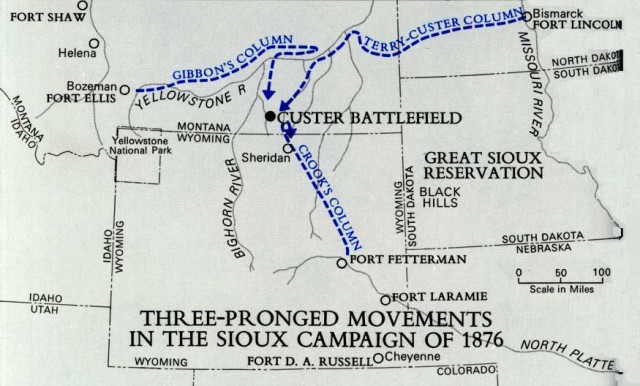
Before riding out on the campaign, Custer went to a barber and had the man cut off the long, golden curls that had been one of Custer’s most famous features. Like the biblical Samson, Custer would find that his haircut was a prelude to disaster.
General Terry’s expedition was sent out to round up natives still living free in Dakota and Montana. Meanwhile Sitting Bull, a Hunkpapa Lakota holy man, was gathering thousands of natives to discuss the problem of the whites.
On 22 June, Custer was sent with a detachment of several hundred men to follow the tracks of a native force. On 25 June they discovered a massive camp of 10-15,000 Sioux and Cheyenne on the Little Bighorn River. On the way, Custer had ignored the advice of his scouts not to light campfires, as these would let the enemy know they were coming. There was no element of surprise to be had and the native Americans were prepared for the General. To make matters worse, Custer was too impatient to wait for the rest of Terry’s force. He was ignoring every rule of military strategy.
He decided to attack.
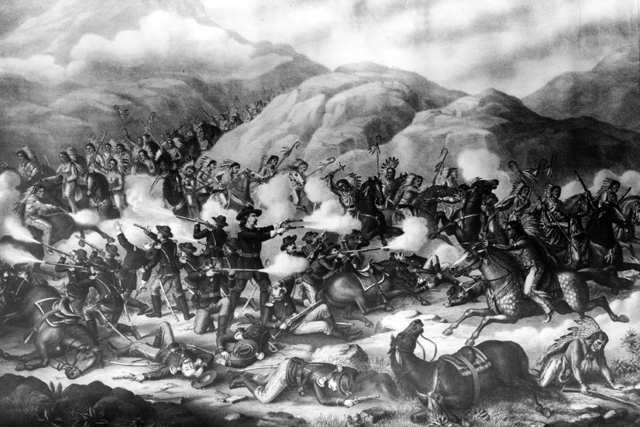
Splitting his men into three groups, the largest only 208 strong, Custer attacked the camp from three directions. What followed was a disaster, popularly remembered as Custer’s Last Stand, and known by the Lakota as the Battle of the Greasy Grass.
An estimated 3,500 braves fought back against the attackers. Custer’s group, the largest in the attacking force, was driven back onto a slope, where they dismounted and took defensive positions. Surrounded and massively outnumbered, they were slaughtered.
Following his death, Custer was remembered by the American public as a tragic hero, not the fame-hungry commander who had got his men needlessly killed. He became an icon for those seeking war with the people of the plains, the deaths at Little Bighorn one more excuse for war.
Custer died as he sought to live – in battle, and in a blaze of publicity.
